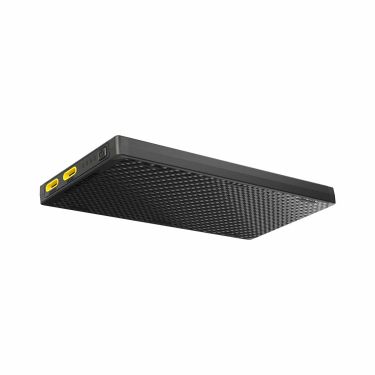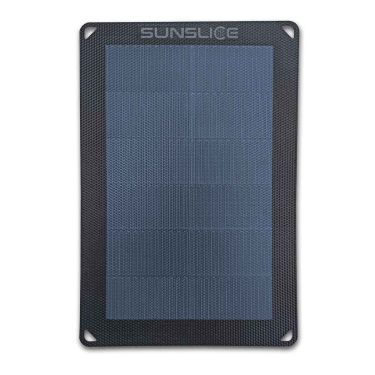-
Free delivery on purchases of €70 or more to relay points in Europe
-
Enjoy -10% on the Backpacking Food Category with the code: TREKKING10
What do IPX4, IP68, etc. Mean? Definition of the IP Protection Rating
When looking to purchase an external battery or a headlamp, you may have noticed a symbol in the specifications that you didn’t recognize. Depending on the product, it could be IPX4, IP68, or IPX8. Let's define together this essential criterion when choosing outdoor gear.
What is the Protection Rating ?
The protection rating, also known as the IP code (Ingress Protection), is an international standard used to measure the resistance of electronic products to the intrusion of foreign bodies (dust, solid objects) and water splashes. It is especially useful for products intended to be used in dusty or wet environments, such as headlamps, external batteries, or solar panels. These products are often sealed and come with a certification (IPX4, IP68, etc.).
Understanding the meaning of a code
The IP code consists of two digits, which indicate the level of protection against solid objects and water splashes, respectively. The first digit ranges from 0 to 6 and indicates the degree of protection against solid objects, while the second digit ranges from 0 to 8 and indicates the level of protection against water splashes. For example, a product with an IP code of 6/8 is protected against solid objects of all sizes and against high-pressure water splashes.
Very often, you will encounter products with only one digit (IPX4, IPX6, or IPX8). This does not mean that the product is not protected against solid objects. It simply indicates that the manufacturer has not tested the equipment against solid objects.
IP Code Classification Table
Here is the classification table for protection ratings according to the standard.
| Degree of protection | Sold bodies | Water intrusion |
| 0 | No protection | No protection |
| 1 | Protection against solid bodies larger than 50 mm | Protection against vertically falling water droplets |
| 2 | Protection against solid objects larger than 12,5 m | Protection against water droplets falling at an angle of 15 degrees |
| 3 | Protection against solid objects larger than 2,5 m | Protection against splashes of water |
| 4 | Protection against solid objects larger than 1 mm | Protection against water splashes from all directions |
| 5 | Protection contre la poussière | Protection against water jets from all directions |
| 6 | Complete protection against dust | Protection against strong water jets from all directions |
| 7 | - | Protection against temporary immersion |
| 8 | - | Equipment submersible beyond 1 meter under the conditions specified by the manufacturer in terms of duration and pressure |
| 9 | - | Protection against high-pressure, high-temperature cleaning from multiple directions |
Note: It is important to note that IP codes 8 and 9 are not included in the international protection rating standard (IEC 60529). However, they are often used and can be found on certain products.
Examples of commonly used IP ratings
Below are some examples of common standards found in outdoor equipment such as headlamps or solar panels:
- IPX4: Protection against water splashes from all directions.
- IP68: Equipment that is submersible beyond 1 meter under the conditions specified by the manufacturer in terms of duration and pressure, and fully protected against dust.
- IPX7: Protection against temporary immersion.
- IPX8: Equipment that is submersible beyond 1 meter under the conditions specified by the manufacturer in terms of duration and pressure
Why is it important to check the IP code of your outdoor products ?
As an enthusiast of hiking, ultralight walking, camping, bushcraft, mountaineering, bikepacking, ultratrail, self-sufficiency, or polar expeditions, it is essential to have quality and durable products to accompany you on your adventures. The protection rating is a key factor in determining whether your gear will withstand the elements.
It is also important to note that the protection rating does not measure resistance to impacts or other types of damage. If you need products that are resistant to these factors, be sure to check the product specifications and look for additional certifications.
In summary, the protection rating is an important standard to consider when purchasing electronic products meant for use in challenging or wet environments. Be sure to verify that the IP code of any product you buy ensures an adequate level of protection for the intended use.
A Word About Lyophilise & Co 🌶
Based in Lorient, Lyophilise & Co is the go-to reference for freeze-dried meals and high-quality outdoor gear. Whether you're a hiker, skipper, trail runner, bushcraft enthusiast, or bivouac lover, we offer a wide range of technical products tailored to all your adventures. With over 2,000 items available, we support your expeditions in France and abroad.
If you have any questions, our experts are here to help and will gladly assist you:
☎ +33 (0)2 97 87 23 73
✉ team[at]lyophilise.com
We also have a showroom open Monday to Friday:
📍 6 bis rue du Sous-Marin Vénus, 56100 Lorient, France
Related posts
-
 23 Christmas gift ideas for hiking and camping
Posted in: Equipment2024-11-15Discover our gift ideas for hiking and camping enthusiasts. You'll find the perfect gift in this extensive list,...Lire la suite
23 Christmas gift ideas for hiking and camping
Posted in: Equipment2024-11-15Discover our gift ideas for hiking and camping enthusiasts. You'll find the perfect gift in this extensive list,...Lire la suite -
 Partnership with Secouristes Sans Frontières
Lyophilise & Co and Secouristes Sans Frontières create an evacuation bag.Lire la suite
Partnership with Secouristes Sans Frontières
Lyophilise & Co and Secouristes Sans Frontières create an evacuation bag.Lire la suite -
 Lyophilise & Co is moving!
Posted in: Equipment2024-11-15Ariane Pehrson's team has just settled into its new premises. For regulars, the company specializing in the sale of...Lire la suite
Lyophilise & Co is moving!
Posted in: Equipment2024-11-15Ariane Pehrson's team has just settled into its new premises. For regulars, the company specializing in the sale of...Lire la suite -
 Marathon des Sables: List of Mandatory Equipment
Below is the list of mandatory equipment (applicable for each MDS event in Morocco, Peru, or Fuerteventura)Lire la suite
Marathon des Sables: List of Mandatory Equipment
Below is the list of mandatory equipment (applicable for each MDS event in Morocco, Peru, or Fuerteventura)Lire la suite -
 A New Building for Logistics
Posted in: Equipment2024-11-15Our colleagues in charge of order preparation are running out of space !Lire la suite
A New Building for Logistics
Posted in: Equipment2024-11-15Our colleagues in charge of order preparation are running out of space !Lire la suite

















Leave a comment